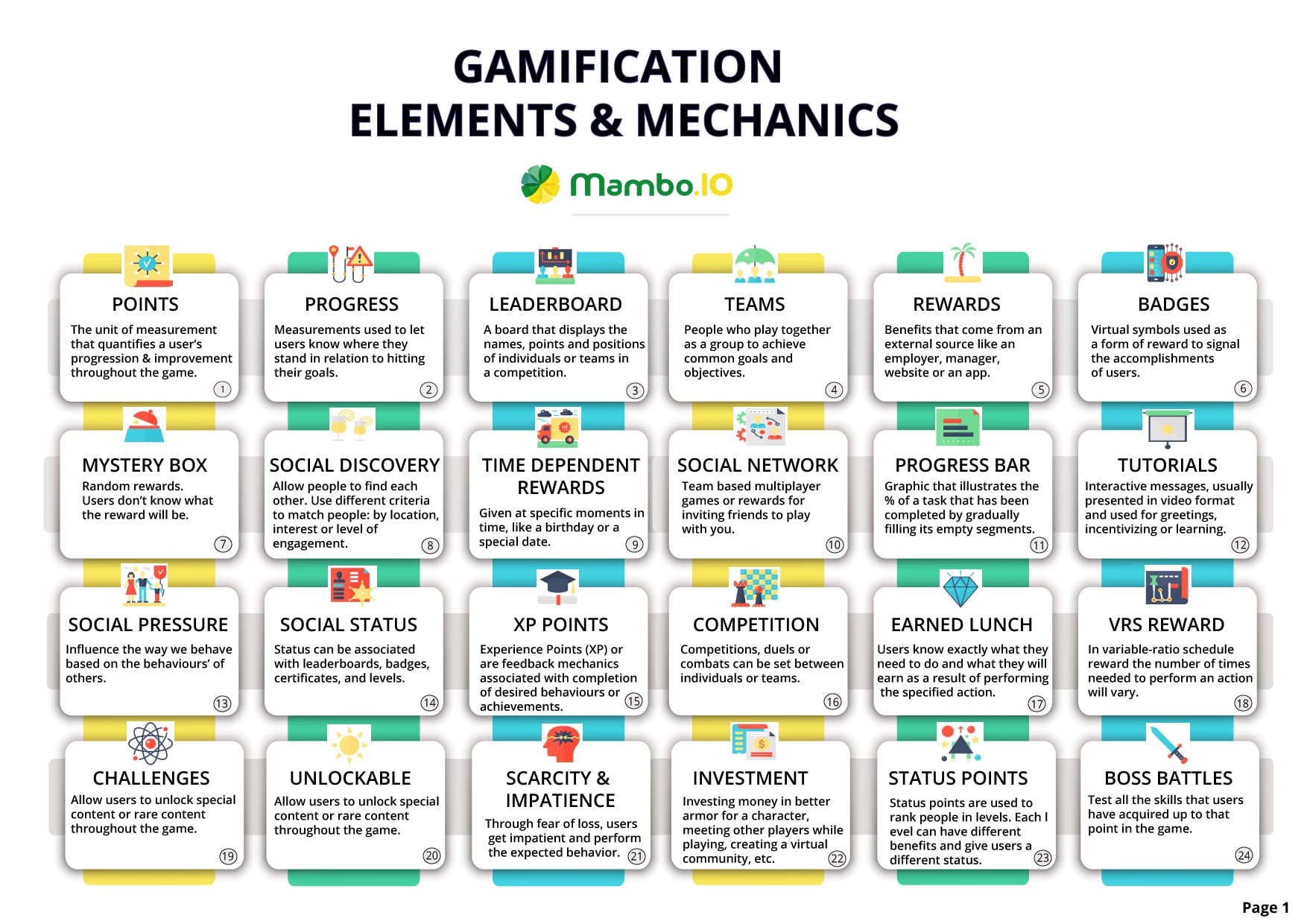What is eLearning Gamification: A Comprehensive Guide 2023
Elearning gamification is the culmination of two concepts. eLearning, is an effective learning strategy, if not for its lack of engagement, and gamification, a strategy known to maximise engagement. The combination of these two ideas seems to be as perfect as it can be.
But don’t take our word for it. Let the statistics speak for themselves.
This survey, for instance, reveals that 78% out of 3,000 students believe online courses aren’t sufficiently engaging. Meanwhile, this survey shows that 85% of employees find gamified work experiences engaging. In short, eLearning, by itself, is not engaging, while gamification is.
However, you cannot slap gamification into your eLearning platform and call it quits. It takes an understanding of these two concepts to implement eLearning gamification successfully.
Today, we will go over a couple of eLearning gamification statistics, discuss the impracticalities of eLearning, and how gamification can help. We’ll also look at a few examples of companies that succeeded in eLearning gamification and how you can do the same.
Let’s start with a brief introduction to this concept.
Table of Contents
- What is gamification in eLearning?
- eLearning gamification statistics you should know
- 5 common challenges of online learning programs
- 5 benefits of eLearning gamification
- What does eLearning gamification offer to businesses?
- Successful examples of eLearning gamification
- Best practices when implementing eLearning gamification
- Common mistakes when implementing eLearning gamification
- Wrapping up: eLearning gamification
- Machine Learning In Finance: 12 Essential Applications
- How To Create Interactive Compliance Training For Bank Employees
- How Fintech Apps Are Using Gamification To Increase User Engagement
- Top Gamification Companies for Employee & Customer Engagement
Download your free
“Gamification Guide”
Get your PDF now and start transforming your approach to digital engagement!
What is gamification in eLearning?
What is gamification?
Gamification is adding game-like elements to an otherwise non-game platform or system. For reference, here’s a list of some gaming elements it usually involves:
- Leaderboards.
- Point systems.
- Level systems.
- Badge awards.
- Achievements.
Basically, the gamification strategy’s main appeal is to make something more engaging.
Now, how is this relevant to eLearning? you may ask.
What is eLearning?
eLearning is a type of learning conducted through the internet, hence why it’s also often called online learning. Many industries can and do benefit from this system.
The education sector is perhaps the most obvious one.
It’s also surprisingly prominent in the corporate world, as companies would often employ eLearning to improve employee performance and skills.
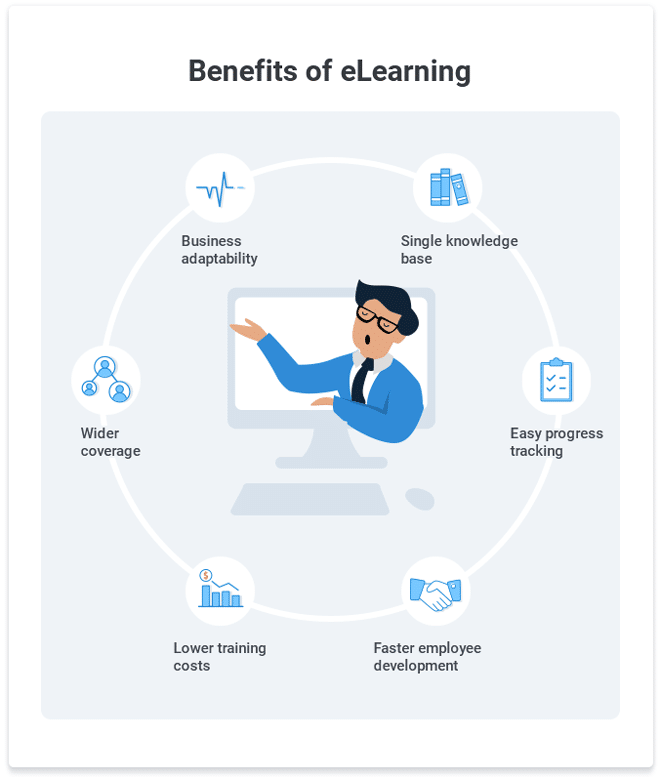
Source: iSpring
Unfortunately, that’s only in theory since it suffers from various problems.
For one, learning in itself is boresome, and online learning seems to be even more so. But that’s precisely why companies are now incorporating gamification into eLearning.
That, and historical data shows that it’s generally effective.
eLearning gamification statistics you should know
A combination of eLearning and gamification would result in one’s strength making up for the other’s weakness. So, in theory, it works perfectly. How do we know this would work?
For that, perhaps these eLearning gamification statistics would help:
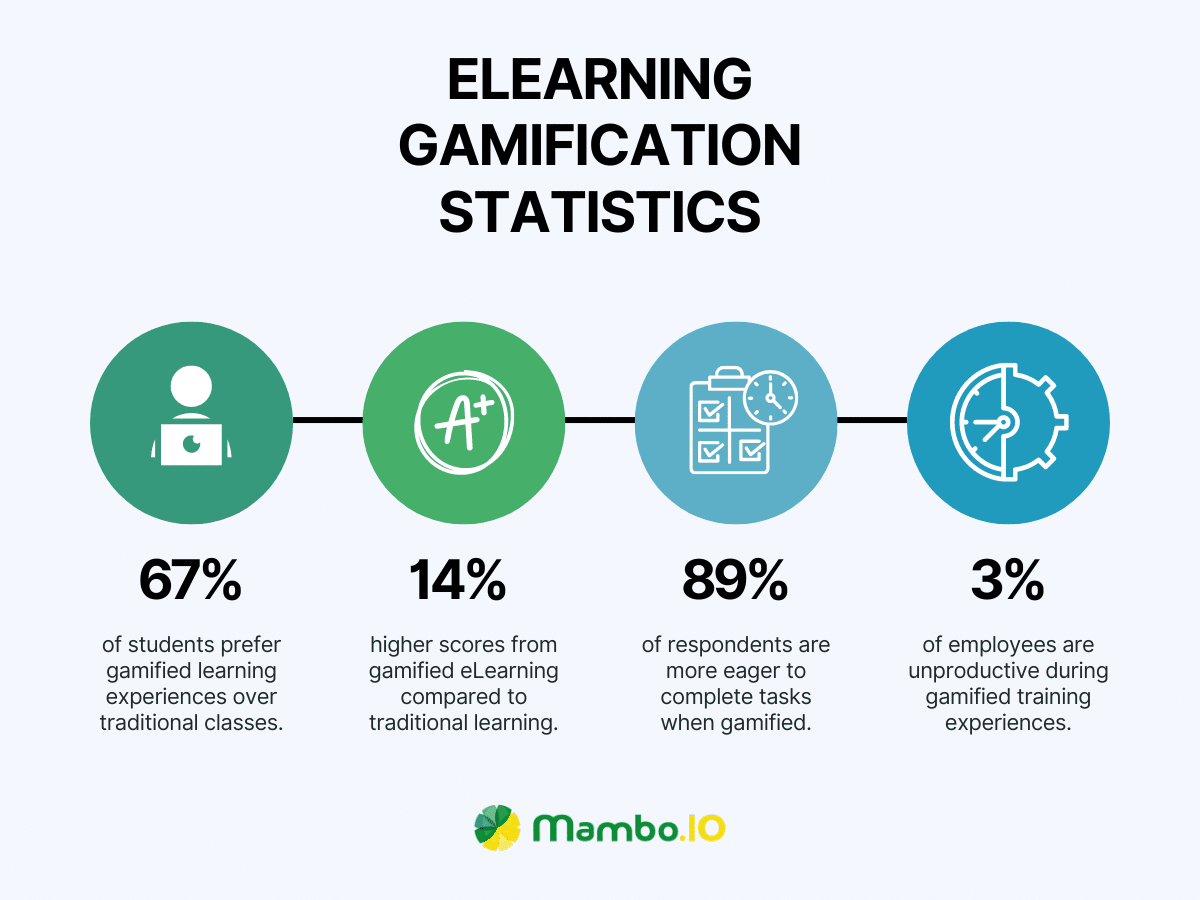
These pieces of data tell us that eLearning gamification is indeed effective. But why, exactly?
To answer that, it would help first to understand why eLearning, by itself, is often ineffective in the first place.
Download your free
“108 Gamification Elements and Mechanics”
Get your cheat sheet and have a quick reference at your fingertips!
5 common challenges of online learning programs
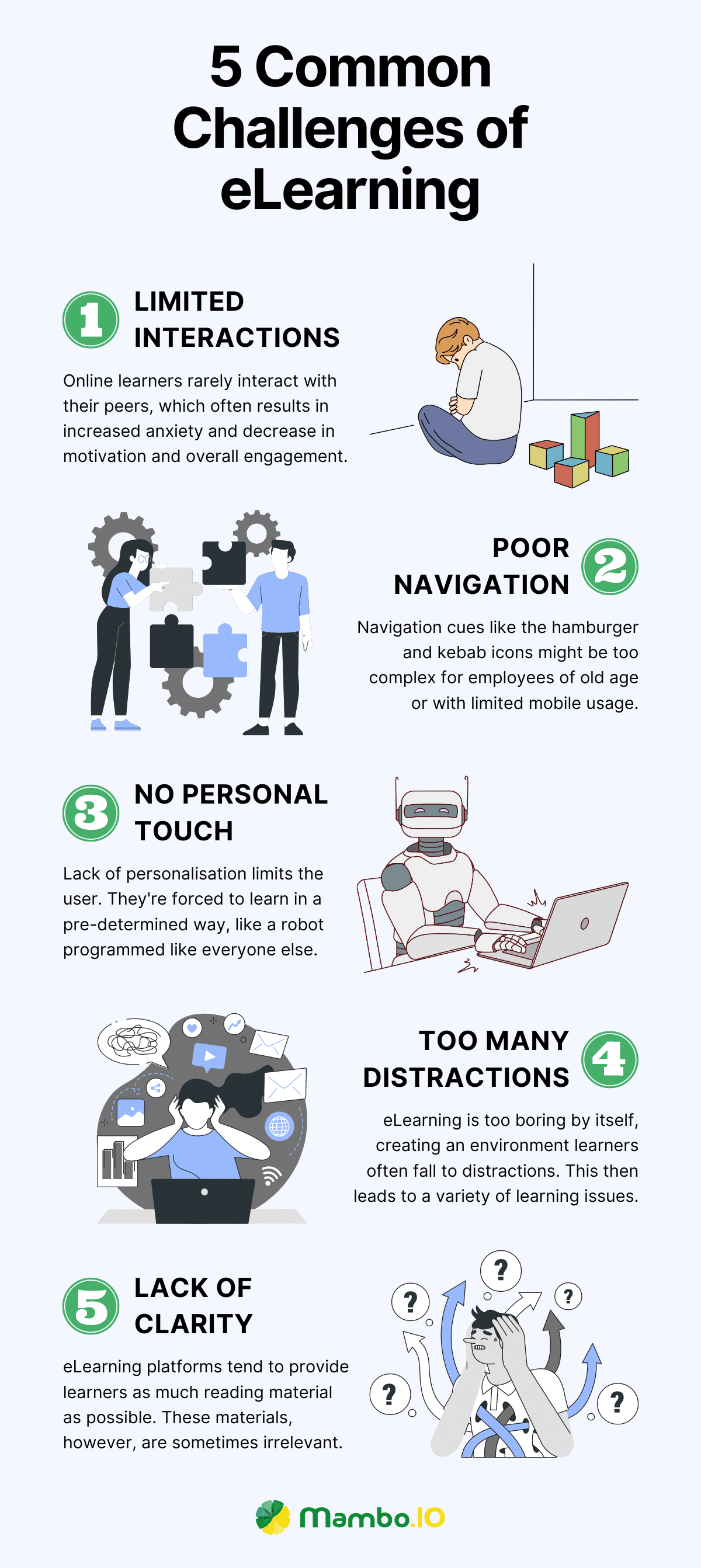
#1. Limited interactions
Part of what makes face-to-face classes somewhat effective is the social aspect it brings to the table. Every student can interact with other learners and friends.
The issue is that it can sometimes get excessive, as students attend school solely to socialise with their friends. Learning is no longer part of the equation. It’s purely social.
eLearning is the opposite, where learning constitutes a large part of the learning experience.
The following infographic might help drive this point.

Source: Tophat
These statistics reveal the importance of social interactions in learning and development (L&D) systems. This urgent need for socialisation applies not only to students but also to employees.
Without social interactions, employees may feel isolated, resulting in lower productivity and in turn, inhibited learning.
#2. Poor navigation and user experience (UX)
Not everyone knows how to navigate a website. Some people are too far behind in technology.
Alas, many companies develop platforms without considering this.
As a result, they may create a rather complex UI, which might be simple for your average techie. An excellent example of this is the use of rather common icons or symbols.
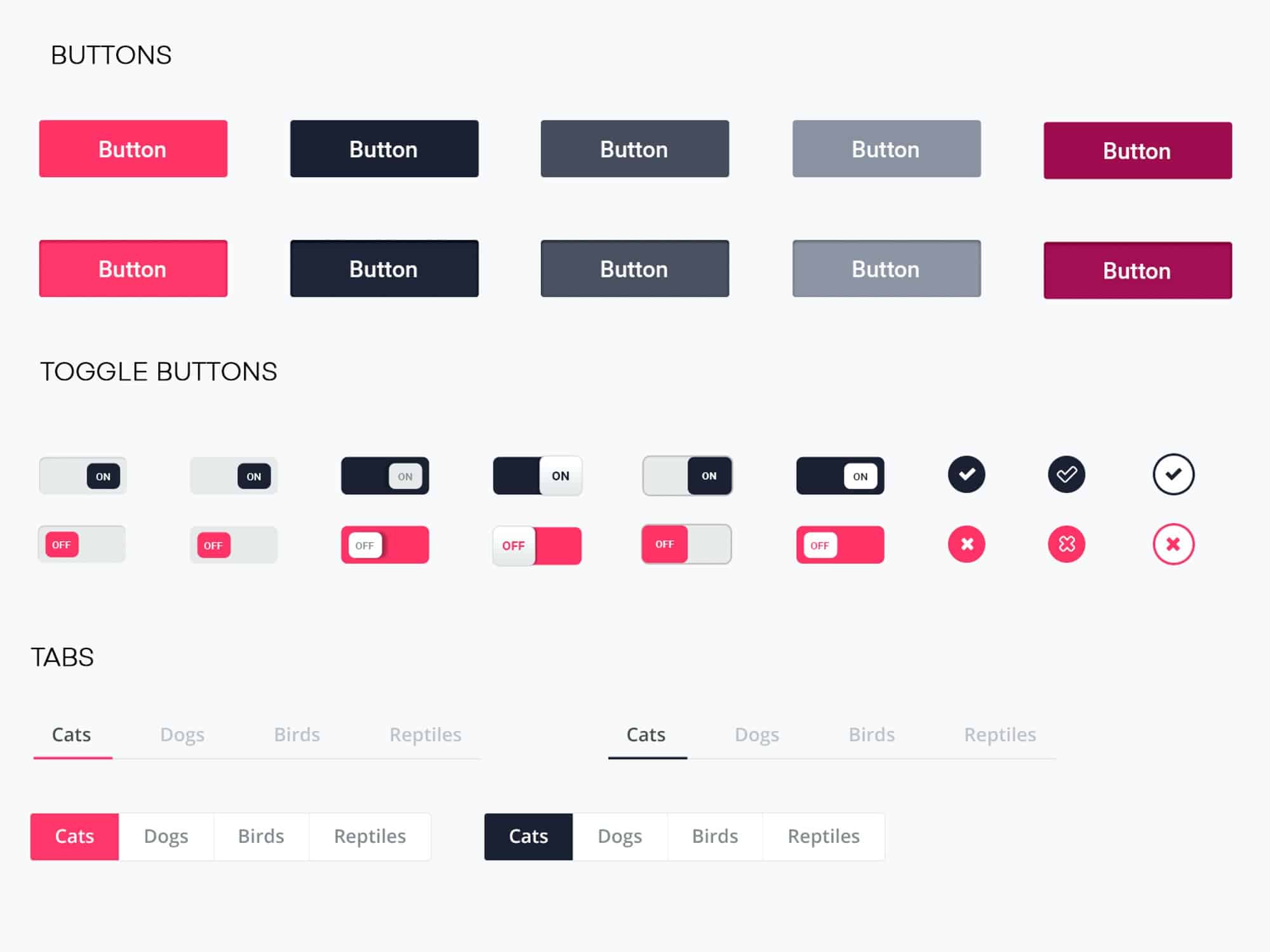
Source: InVision
These icons might be common, but not everyone knows about them.
Other common navigation and UX issues eLearning platforms tend to have include:
- Poorly organised content.
- Unclear navigation cues.
- Lack of search functionality.
- Cluttered interface.
- Inconsistent aesthetic or design.
#3. Lack of personalisation
Everyone differs in many ways.
In the context of learning, one person may differ in the following aspects:
- Learning speed.
- Areas of difficulty.
- Specialisations.
- Visual preferences.
Many platforms don’t consider this, however, and as such, they provide a singular curriculum to users. In doing so, they miss out on the potential benefits of personalisation.
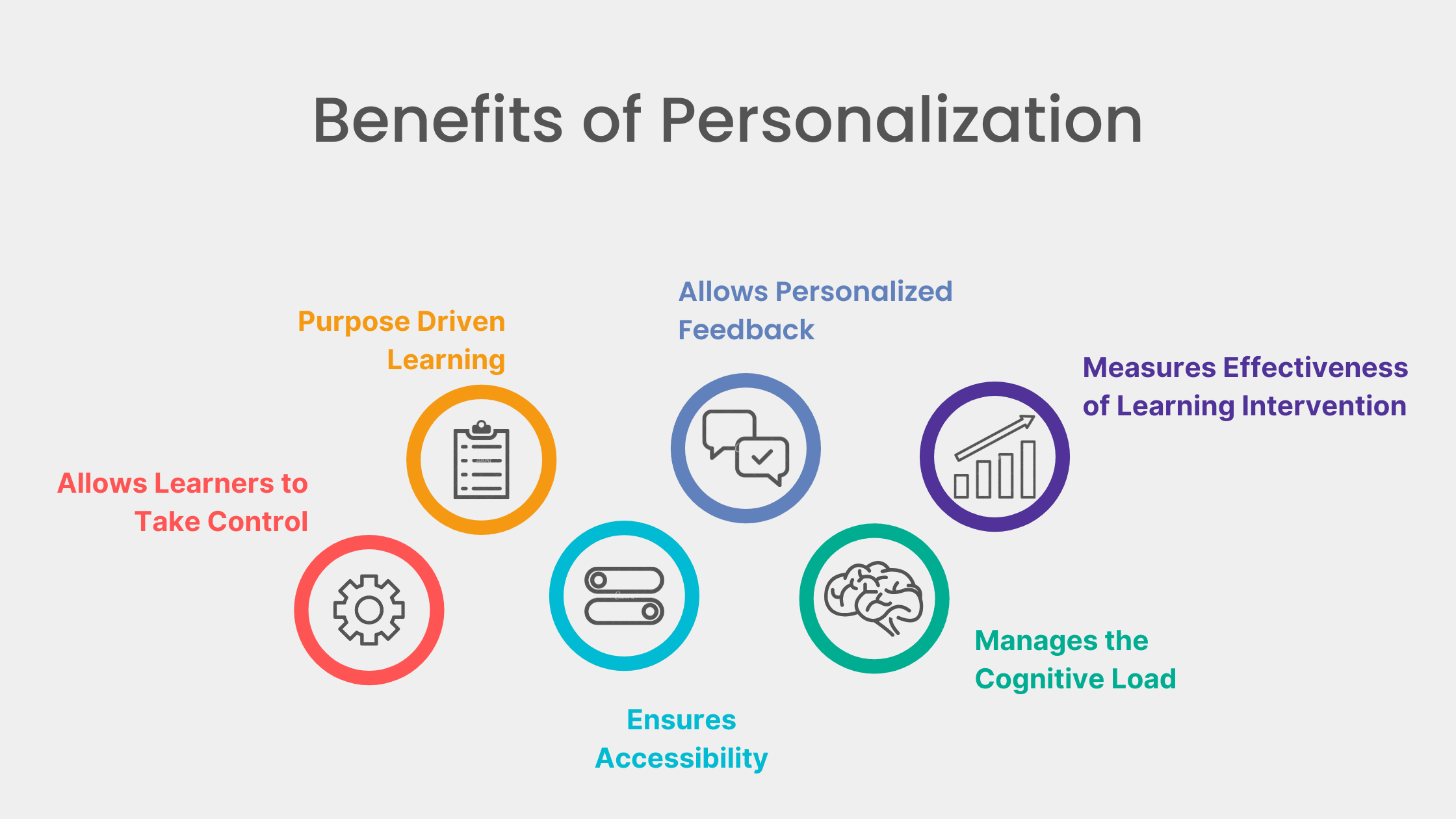
Source: edly
Personalisation is so important that this statistic shows how most L&D experts value personalised learning. They believe it is vital to employee engagement.
#4. Abundance of distractions
It goes without saying that learning is not the most exciting activity. After all, it often involves sitting passively and reading blocks of text. That’s why employees would often procrastinate until the very last moment before they complete a training module they’re required to finish.
That’s particularly true with eLearning, since the internet is full of distractions.
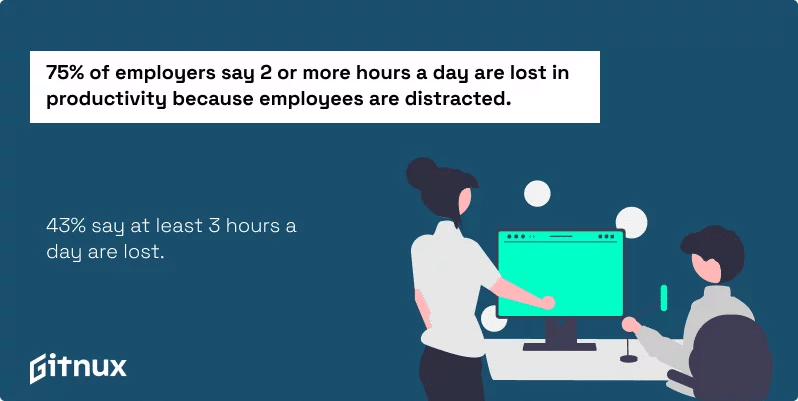
Source: Gitnux
YouTube videos, tweets, and news are just a few examples of potential venues for procrastination. The worst part is you really cannot do anything to eliminate them.
Micromanagement is one way, but that opens up a whole new can of worms.
Not to mention distractions can also lead to other issues, other than wasting time:
- Distractions lead to cognitive fatigue as you switch from one task to another.
- Your attention is divided, so your subsequent memory would be impaired.
- When a learner is distracted, their brain processes information differently.
This 2020 study delves deeper into this topic if you want to learn more.
#5. Lack of clarity
Even if the learner can concentrate intensely on the topic, another issue is lack of clarity.
Learners are unaware of what is expected from them at the end of a module.
As a result, they may spend excessive time reading irrelevant information, thinking it’s essential to the module. Meanwhile, the really important stuff they’re supposed to read is ignored.
Put simply, eLearning systems often lack a clear learning path.
Needless to say, eLearning is quite effective, at least on paper. But because of these five challenges, it becomes much less productive in practice, especially on its own.
With gamification, however, things become a lot different.
Gamification offers several benefits that happen to also help resolve the challenges that people often face with eLearning. Here’s a closer look at these specific benefits.
5 benefits of eLearning gamification
#1. Gamification encourages interactions with other learners
eLearning suffers from limited social interactions.
Gamification solves this by encouraging social interactions through elements like the following:
- Leaderboard – A leaderboard ignites the competitive spirit of a learner. It gives them a reason to do better than their peers or employees in the case of training platforms.
- Teams – Gamified platforms employ team systems where users are grouped with their peers. This creates a collaborative environment, which often leads to positive results.
- Forums – A discussion forum also cultivates a collaborative learning environment. But more specifically, it allows users to share their knowledge and learning strategies.
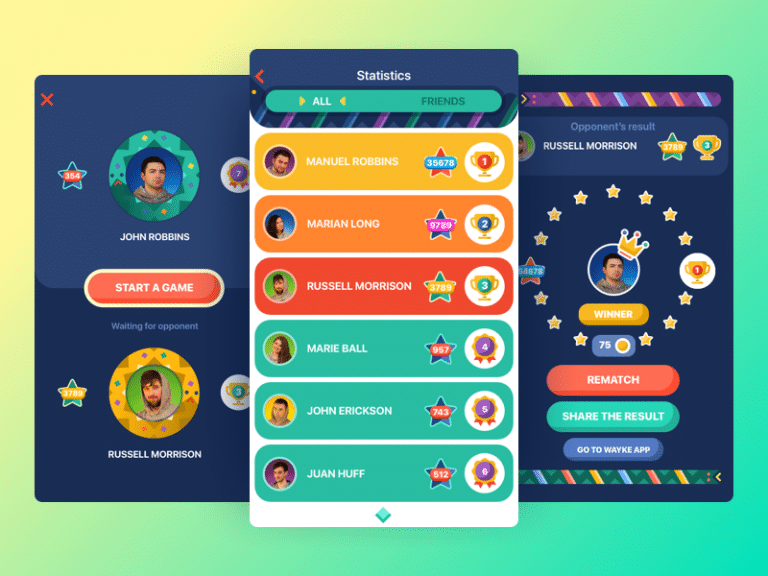
Source: tubikblog
By making a learner part of a larger group, they are less likely to feel isolated. This then translates to higher productivity and perhaps even a better mental state.
#2. Gamification necessitates an intuitive user interface
Any digital platform can suffer from a poorly-designed UI. However, that’s particularly true to eLearning platforms since the UI is often not the development team’s priority.
In most cases, acquiring learning materials and structuring them is the top priority.
Gamification helps prevent user experience (UX) issues by placing the user interface or design higher up in the priority list. As the development team invests more time, effort, and money into UX, the possibility of a poorly-designed UI lowers drastically. Furthermore, gamification, by itself, may involve a variety of elements that make navigation easier, such as the following:
- Simple cues – Gamified platforms utilise rather straightforward cues that most people are already familiar with. Even if they’re not, other elements like tooltips should help.
- Tooltips – Much like a game, eLearning gamification makes use of tooltips. These are messages that occasionally appear, like when a confusing task must be completed.
- Tours – Gamification promotes the use of tours, which takes the user to each part of the platform. They will then find messages explaining every component’s functionality.
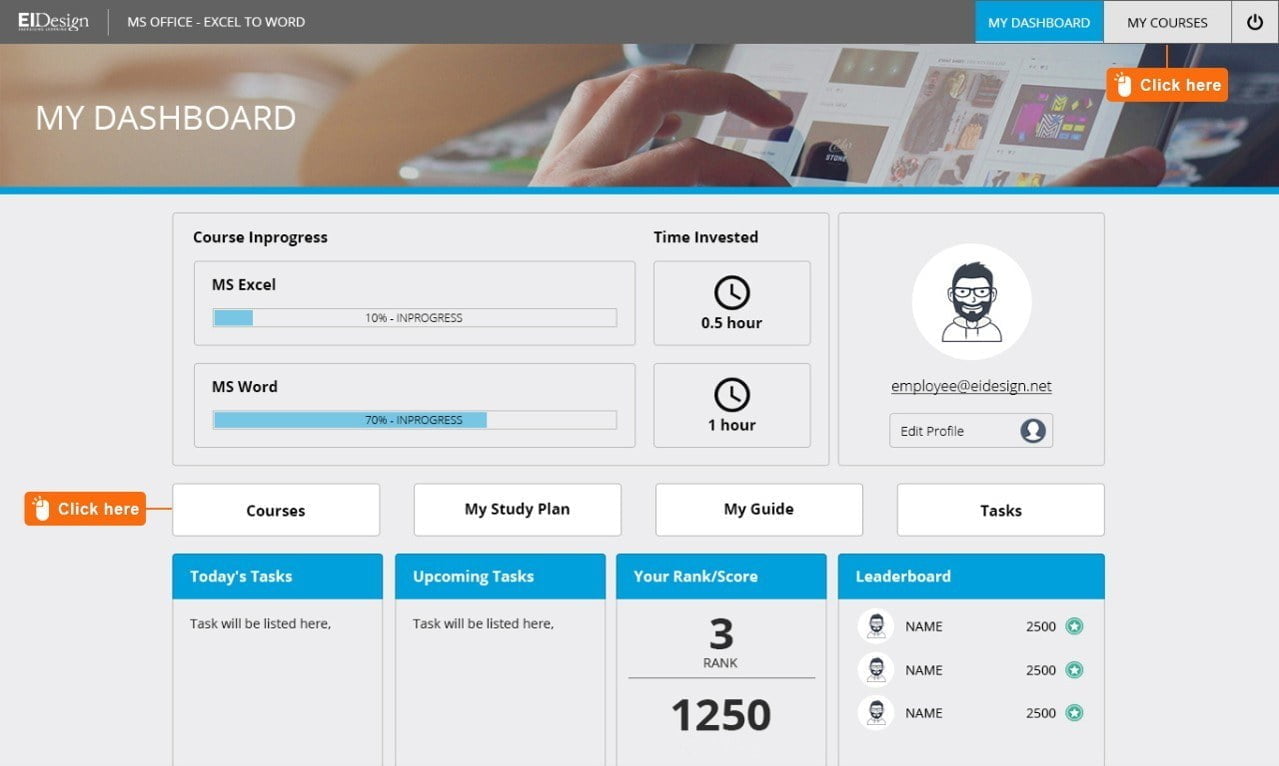
Source: eLearning Industry
Granted, not all gamified learning platforms will have these elements, but gamification encourages their inclusion.
#3. Gamification revolves around personalised experiences
Another strategy that gamification promotes is the use of data-driven insights.
Rather than just recording a user’s learning data, the platform would use it as input to further enhance itself. Here’s how it would usually lead to personalisation:
- Adaptive learning paths – The gamified eLearning platform may include or omit certain learning materials based on the learner’s performance and progress. It may also suggest specific challenges that the particular learner must fulfil.
- Avatars – An avatar is the user’s visual representation. It may not involve deeper mechanisms usually, but visual personalisation alone helps with immersion.
- Preferences – Games would often allow you to adjust the settings. Similarly, gamified platforms allow users to make slight adjustments to their preferences. They can, for example, change how often the platform should remind them to complete a lesson.
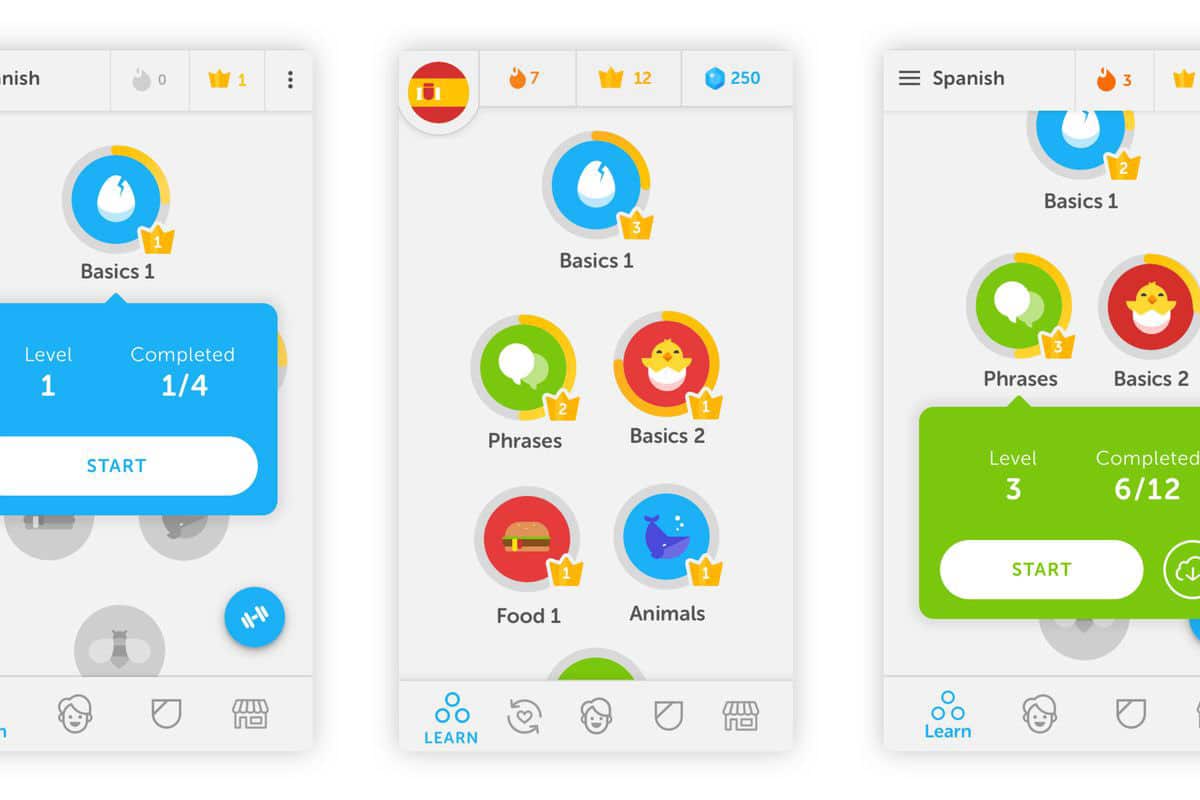
Source: Behance
Gamification revolves around personalised experiences, so personalisation is no issue if you can implement it properly.
#4. Gamification requires active user participation
Distractions are a byproduct of boring lectures in eLearning platforms.
Though, indeed, you cannot completely eliminate distractions, gamification makes it so lectures are no longer as dull. In turn, this reduces the need for distractions.
Gamification achieves this in many ways, like by introducing elements such as:
- Choices – Gamified platforms would often give users a chance to choose between different options. This promotes active participation from the user, making them too preoccupied that they wouldn’t think of looking for distractions.
- Games – Gamification doesn’t mean adding games. But in this case, games can help minimise the user’s reliance on distractions by making the platform more entertaining.
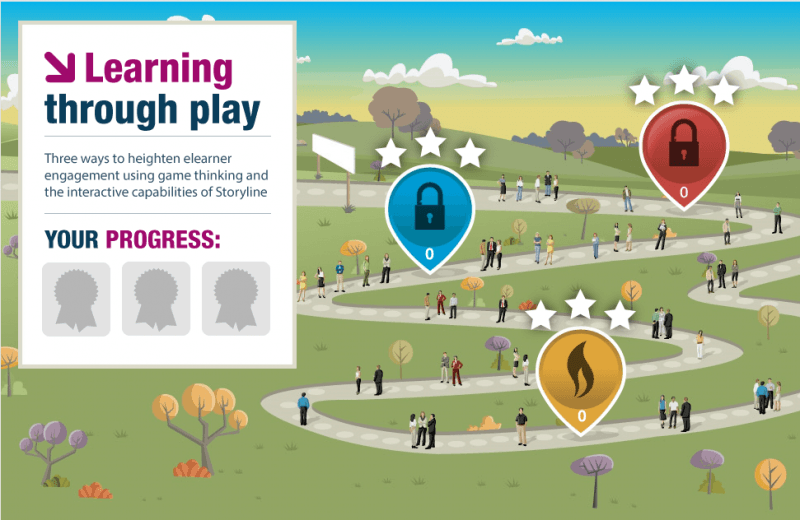
Source: eLearning Industry
#5. Gamification makes learning linear
Lack of clarity mostly comes from the lack of learning objectives and goals.
Users are unsure where the lesson or training module begins or ends. Gamification, however, makes this immediately clear by setting a learning path immediately through elements like:
- Classes – Some gamified platforms make use of character classes, where users can decide the type of character that represents them and their learning path.
- Badges – Achievements, which may come in the form of badges or certifications, act as a learning goal or objective that the user must complete within a specified period.
- Progress bars – A progress bar indicates the percentage of the lesson a user has completed. It represents clearly when the lesson ends, preventing confusion.
Now, you may notice that these benefit the end-user or, more specifically, the learner. So, the question remains, is eLearning gamification beneficial to your bottom line?
What does eLearning gamification offer to businesses?
Unsurprisingly, eLearning gamification is also a powerful tactic to improve your bottom line. Here are several reasons why.
#1. Increased user engagement
User or customer engagement is a significant factor that affects a company’s revenue.
Take, for example, the retail banking industry. Gallup research found that engaged customers bring around 37% more yearly revenue than unengaged customers.
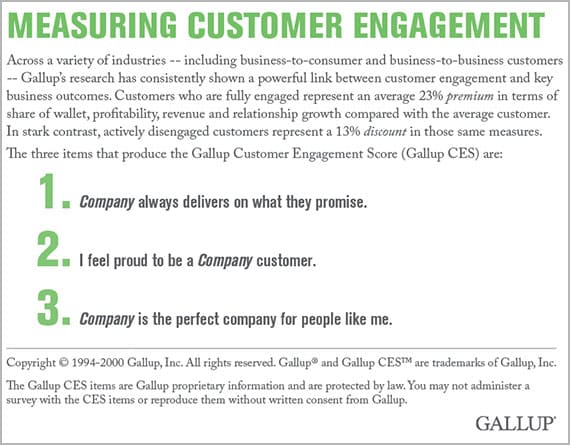
Source: Gallup
That study also found that engaged restaurant customers visit 56% more frequently than active but disengaged customers. Simply put, higher user engagement = higher revenue. And as it happens, eLearning gamification is all about user and product engagement.
#2. Enhanced loyalty
eLearning platforms are not a new idea by any means.
So, the competition revolving around these platforms is intense. As such, it’s challenging to retain a user, as they may switch to another app if they find yours unfulfilling.
You must give them a reason to stay to enhance customer retention and loyalty.
Gamification achieves this in many ways, particularly in the form of game elements.
- Social profiles – Gamification may introduce social profiles to a platform. This is when users can add other users, perhaps their friends, within the platform. And a user is less likely to uninstall an app their friend also uses.
- Leaderboards/rankings – Getting into the leaderboards is perhaps one of the biggest milestones in a game. It takes enormous time, so users who’ve already done it are unlikely to leave the platform on a whim.
- Progression/levels – The same logic applies to levels. Getting a high level is usually not something you can do overnight. The higher a user is level within the platform, the more convincing it would require them to leave it.
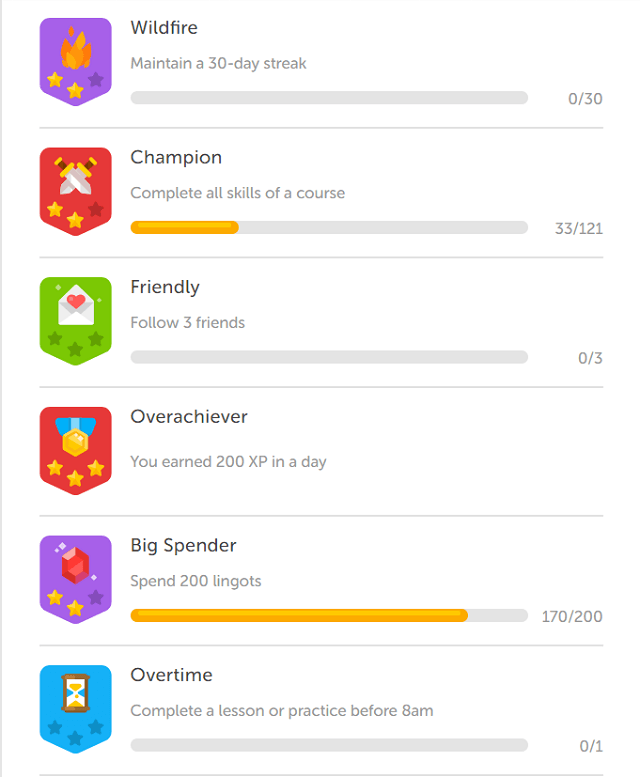
Source: Duolingo
This is relevant since the longer a user remains a customer, the higher the revenue they would generate for your business. In short, higher loyalty = customer lifetime value = higher revenue.
#3. Competitive advantage
Packaging is an important element of a product.
If you’re lucky, your packaging may set your product apart from the competition. In this context, gamification is your packaging, and a fairly appealing one.
Think of it this way: an eLearning platform is like a gift wrapped in cardboard. A gamified eLearning platform, however, is a gift with a proper wrapper.
If this still doesn’t convince you, the following examples might.
Successful examples of eLearning gamification
#1. Classcraft
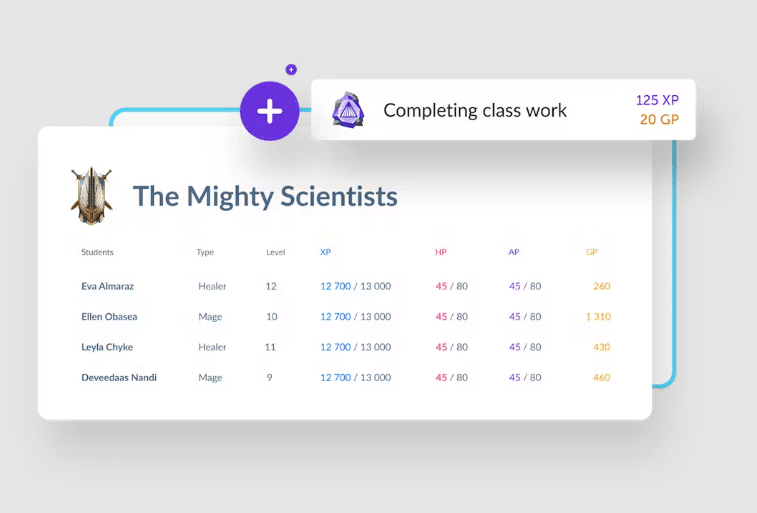
Source: Classcraft
Classcraft is a classroom management platform featuring game elements like:
- Unique character classes (Guardians, Mages, and Healers).
- Unique pets, gear, and powers.
- Levels.
- Hearts.
Classcraft allows teachers to encourage or discourage positive and negative behaviour through a game-like system. They can take hearts away when a student misbehaves and give experience points or gold pieces when students perform well.
The company stands by one principle—driving students to learn through enjoyment rather than the fear of punishment or pressure.
#2. Mathletics
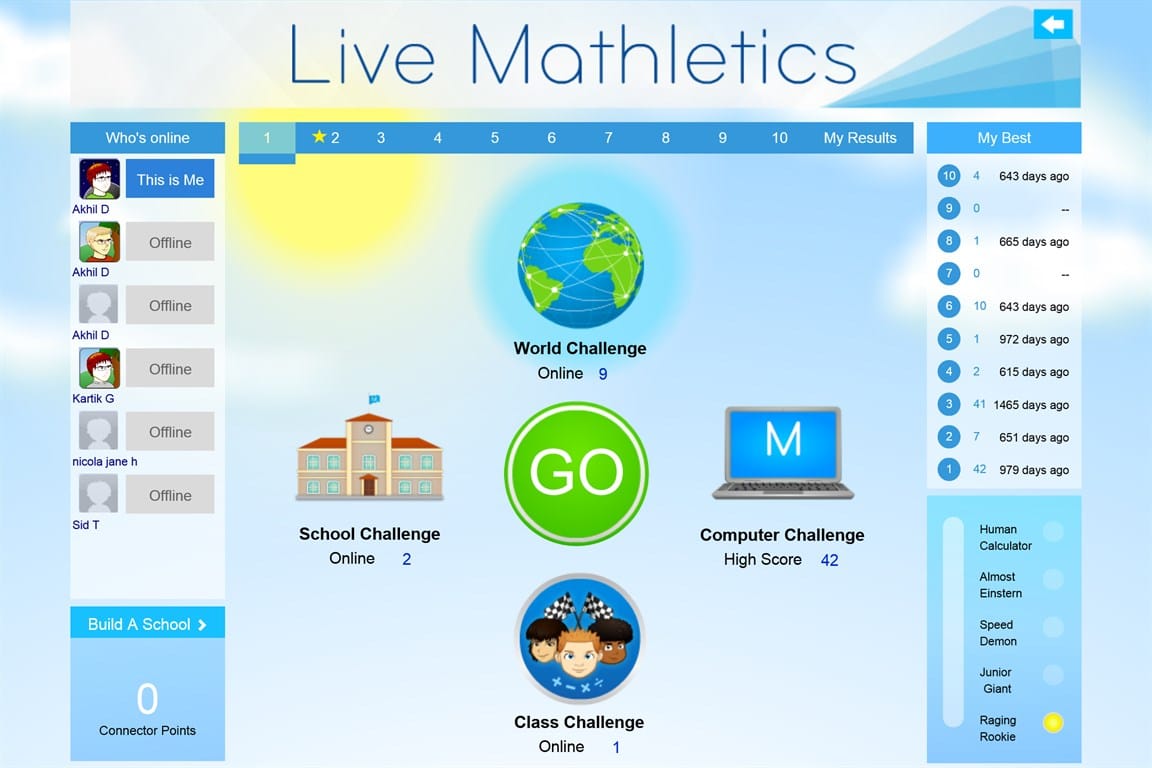
Source: Mathletics
Mathletics is likewise a learning management system catering to educators and students.
The platform consists of several interactive games that take the place of exams. It also involves virtual currency such as gold, silver, and bronze, much like the typical game.
Though Mathletics is not as in-depth as Classcraft, it reveals gamification’s advantage in a rather difficult subject. It also showcases the appeal of gamification to young audiences that have yet to get accustomed to digital offerings.
#3. Axonify

Source: Axonify
Axonify is a training platform that caters to companies rather than customers.
In particular, it tailors to the specific needs of L&D professionals through gamification.
If you look at this page, you’ll realise how much of their method revolves around gamification. These are also benefits of gamification we previously discussed, like
- Making learning fun through game elements (e.g., leaderboards, reward systems, points, badges, etc.).
- Personalised learning process and experience.
- Data-driven analytics to measure the learner progress.
Needless to say, Axonify is the result of gamification implemented properly.
#4. McDonald’s Till-Training Game

Source: McDonald’s
McDonald’s Till-Training Game is a systems training program centred towards a game.
As the name implies, it’s a game that simulates activities around the till. These include taking orders from customers and responding accordingly.
Interestingly, the corporate training manager didn’t advertise the page. It was stealthily added to the crew website. In other words, it got popular organically.
Some employees found, enjoyed, and shared it, making it the most popular portal page of McDonald’s. But most importantly, it also featured rather commendable success, as 85% of crew members believe it helped improve their performance.
These are just a few examples of eLearning gamification done right. But the keyword here is “done right.” You can’t just slap gamification into your platform and call it quits.
That said, you would do well to keep the following best practices in mind.
Best practices when implementing eLearning gamification
#1. Use tried-and-true tools
There are tons of gamification tools you can use to aid with your development process.
You must practise caution, though, since not all of these tools would be helpful. Some are even detrimental, particularly those that are difficult to use yet bring little value.
So, make sure you choose tried-and-true tools rather than unfamiliar ones.
#2. Establish your business objectives or goals
Though gamification offers a variety of benefits, there’s only so much you can do with a single platform. As such, you must determine what benefit you want in particular.
Is your priority user engagement, training outcomes, or knowledge retention?
Your next steps would depend on your answer.
If you want to prioritise user engagement, you may have to focus on gamification elements that help engage learners.
#3. Leverage the social aspect of learning
It was mentioned earlier that the lack of social interaction is a problem in eLearning.
So, it makes sense that one of the best practices involves including social elements in your platform. This may come in the form of social sharing buttons or leaderboards.
#4. Offer digital rewards for each task done
Digital rewards like points, badges, or levels can make each task feel more meaningful. They provide a sense of achievement, maximising customer lifetime by giving them a reason to continue using the platform.
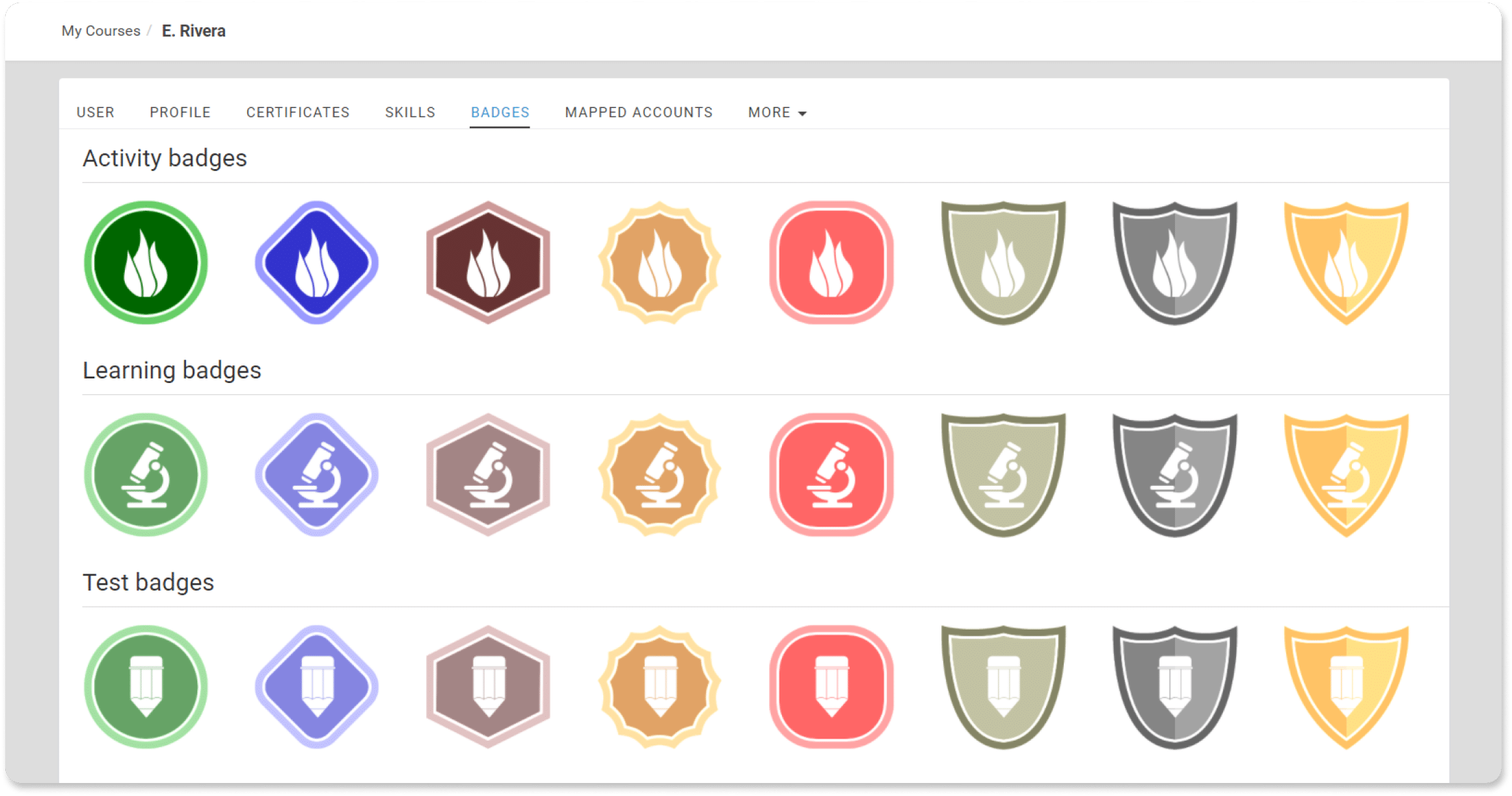
Source: eFront
#5. Set up a clear learning path users can follow
To address the lack of clarity eLearning platforms suffer from, you can include elements centred towards setting a learning path. Some examples of this are:
- Visual progress indicators like track bars.
- Learning modules unlocked only after the previous module is complete.
- Tutorials at the beginning of each module.
- Tooltips through each module.
#6. Analyse results regularly
Not every gamification element would yield positive results. Some may cause user friction.
That’s why analytics is an important part of the project.
Analysing the results would allow you to determine whether an element delivered on expectations. Whether it did well or not, you can decide what to do according to the results.
These are some of the practices successful eLearning gamification companies have utilised. At the same time, there are also practices they would rather avoid due to the issues they bring.
Common mistakes when implementing eLearning gamification
#1. Making the platform revolve around the game
A gamified eLearning platform is still, in its essence, an eLearning platform.
By focusing on the game aspect of the platform, you’re steering further away from the educational aspect. Remember: your goal is to be educational, not entertaining.
#2. Going overboard with competition
Elements like leaderboards and rankings can motivate users. Going overboard may still do the same, but in the wrong way. Here’s a scenario to put this into perspective:

Source: Uptivo
A company announces that the first employee to complete a training module will receive a raise. While it does intensify the competition, it also encourages undesirable behaviour like cheating. Employees are no longer in it to learn but to compete.
#3. Adding too many badges or rewards
While the idea of badges or rewards for each task completed is interesting, it can sometimes get overdone. You can think of them as offering diminishing returns, where at some point, their value no longer increases. In the case of these elements, when there are too many, they would only serve as distractions more than anything.
More precisely, users would be more focused on earning them rather than learning from modules. In short, it defeats the core idea of an eLearning platform.
#4. Making game elements hard
Some games are incredibly hard, but that shouldn’t be the case with your eLearning system. It should be a challenge, but it should still be solvable by the average person.
Otherwise, the game elements may just frustrate the learner.
Let’s say you have a comprehensive topic. It’s tempting to make the module longer than usual. It adds a bit of a challenge, after all, since it’d take a lot of time to get a 100% completion rate.
However, it’s also somewhat frustrating.
Wrapping up: eLearning gamification
Much like learning systems, eLearning gamification isn’t a one-size-fits-all solution. Its benefits may make it seem like one, but it won’t always be the most suitable solution for your company.
This guide should allow you to at least make an informed decision in that regard. However, if, by any chance, you believe eLearning gamification is perfect for your platform, consider Mambo’s suite of gamification APIs. You’ll find that implementing eLearning gamification becomes a lot easier when you have APIs on hand. Book a demo now and see what we mean.
Latest Posts
Machine Learning In Finance: 12 Essential Applications
The impact of machine learning on finance is significant. Thanks to this technology, financial institutions are now equipped to make efficient decisions. Through the analysis of data sets, machine learning […]
How To Create Interactive Compliance Training For Bank Employees
Banking compliance training isn’t just another task. It’s the stage where everything else performs. Banks must navigate a myriad of regulations and laws. After all, this is a trust-driven, high-stakes […]
How Fintech Apps Are Using Gamification To Increase User Engagement
Discover how gamification in fintech is revolutionizing financial engagement, making banking fun & boosting user loyalty.


